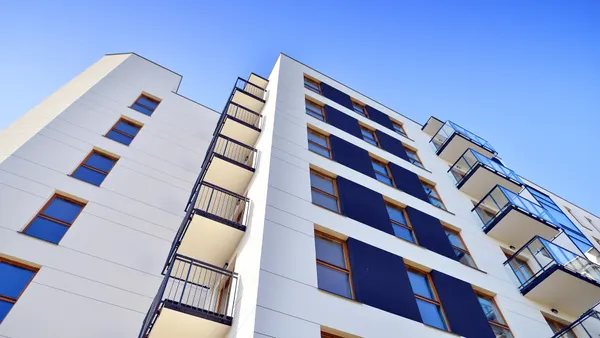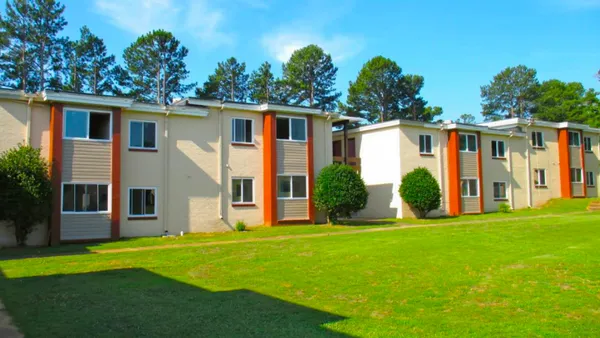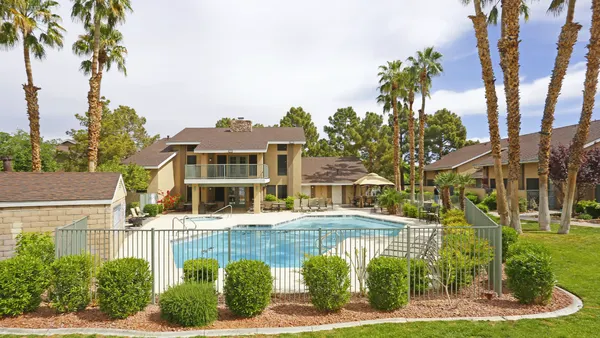Dive Brief:
- When the Federal Reserve began raising interest rates last year, it threw the multifamily sales market into a tailspin as buyers and sellers searched for consensus on property values. However, a new report from commercial real estate services firm CBRE indicates that the market may be stabilizing, at least for prime assets.
- In Q1 2023, the average going-in cap rate, which is based on the first year of net operating income at the property purchase price, increased 23 basis points to 4.72%, “marking the first significant quarterly deceleration in cap rate expansion since the Fed began its latest round of rate hikes,” according to CBRE. In the preceding three quarters, cap rates rose 39, 36 and 38 bps.
- Exit cap rates, used to estimate the resale value of a property at the end of the holding period, haven’t increased as dramatically, rising 87 bps since Q1 2022 compared to 136 bps for going-in cap rates, according to CBRE. A positive spread has persisted between going in and exit cap rates, but it has declined to a very thin 27 bps.
Dive Insight:
In addition to stabilization for going-in cap rates, CBRE said that other metrics, such as unlevered internal rate of return targets and rent growth, decelerated in Q1.
Rent growth expectations have declined over the past two quarters in prime apartment deals, according to CBRE, and the types of markets driving rent growth have changed. Gateway markets like Boston and New York City, which fell behind other metros earlier in the pandemic due to outmigration, now have higher rent growth expectations. CBRE said the average for rent growth assumptions is 3%. “As markets stabilize, rent growth assumptions likely will drift lower but eventually settle near the long-run average,” it said in the report.
Among the 15 major markets tracked by CBRE, Austin, Texas, had the lowest risk requirements on an underwriting basis for the sixth consecutive quarter. Each market posted higher going-in cap rates between Q3 and Q4 2022, but five had no additional expansion in Q1. Only two markets had no movement in exit cap rates in Q4 2022. However, in Q1 2023, 10 metros posted no movement.
CBRE expects “underwriting assumptions for prime multifamily assets will likely peak in the second half of 2023.” Additionally, it said stabilization in interest rates should lead to an increase in activity from buyers, sellers and lenders.
“Everybody just needs to know what the rules of the road are,” Kyle Draeger, senior managing director of multifamily debt and structured finance at CBRE Capital Markets, told Multifamily Dive in an earlier interview. “And nobody knows what those will be until the Fed stops raising rates. Once you get stability and once the Fed says they’re going to take their foot off the gas, you can get an understanding of where interest rates are going to be.”
CBRE isn’t alone in predicting that activity should pick up when the Fed signals a stop to interest rate hikes. Anne Olson, CEO of Minot, South Dakota–based REIT Centerspace, also thinks “people are going to need to know where the ceiling is, or at least generally where the ceiling is on interest rates” before the sales market comes back.
The recent failures of Signature Bank and Silicon Valley Bank could delay that process. “I do think some of these recent failures and what’s been going on the last 30 days are going to delay it a little bit,” she said.
Click here to sign up to receive multifamily and apartment news like this article in your inbox every weekday.








